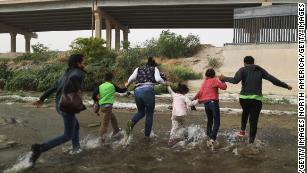Why Does Comet NEOWISE Have Two Tails?
Ethan SiegelSenior Contributor
Starts With A Bang
Contributor Group
Science
The Universe is out there, waiting for you to discover it.

This outstanding composition shows the blue ion tail and the grey/white dust tail of comet NEOWISE ... [+] DAMIAN PEACH / IAN SHARP
For the first time in many years, there’s currently a comet visible to the naked eye in Earth’s night sky: comet NEOWISE. It’s visible to most of the world’s population, currently positioned just below and slightly to the east of the Big Dipper’s ladle. If you look at it with the naked eye, it might appear as a faint, diffuse cloud: identifiable as a comet if you know where to look for it, but without much detail visible.
Through binoculars, a telescope, or with long-exposure photographs, however, an incredible set of phenomena can suddenly be seen. The main nucleus of the comet can be seen shining brightly: all by itself it’s as bright as the top 100 stars in the sky. The main tail of the comet can be seen extending for upwards of 10° away from the nucleus, wide, diffuse, and curving. But alongside it, narrow, straight, and faint, a second, bluish tail can also be seen. These two tails accompany many comets, including comet NEOWISE, and can show us things we might never otherwise see for ourselves about our Solar System. Here’s why there are two of them.

When a comet approaches the Sun, two independent tails can often be seen, a dust tail made of ... [+] SERGEY PROKUDIN-GORSKY; ЮКАТАН / WIKIMEDIA COMMONS
Most Popular In: Science
The Sun Only Shines Because Of Quantum Physics
Now A Naked-Eye Comet After Dark, Few Saw Comet NEOWISE Coming. Here’s How You Can See It Going
How To See Comet NEOWISE, Earth’s Most Spectacular Comet Since 2007
Since even before the invention of the telescope, the “great comets” that have graced Earth’s skies have shown this two-tailed phenomenon. Famously documented in the late 1500s by Tycho Brahe, the main, bright tail always appears to curve, but a second tail, no matter where the comet is located in Earth’s skies, always appears to point perfectly, directly away from the Sun.
In addition, the main tail always appears to be a grey/white color: it reflects sunlight fairly well at all wavelengths. Whatever color the material is that the comet itself is made from, the main tail is always that color as well: the same color as the parent body that gives rise to the tail. But the secondary tail is never the same color as the comet itself, and is instead blue, faint, and always makes a perfectly straight line, pointing away from the Sun in a ray-like configuration.

This 1997 photo of Earth's last "great comet," Hale-Bopp, clearly shows the curved dust tail and the ... [+] UNIVERSAL IMAGES GROUP VIA GETTY IMAGES
By the late 1600s, nearly a full century later, we had started to identify some of the comets as periodic: originating from the outer Solar System and maintaining a very eccentric elliptical orbit. Every so often, these comets pass through the inner Solar System — some of them returning after decades, centuries, or millennia — and experiencing all sorts of changes when they do.
When they’re very far from the Sun, these bodies remain completely frozen, as the Sun’s radiation is far too weak at such large distances to cause any notable effects. But as the comet gets closer and closer to the Sun, its radiation becomes more and more intense. Right around the time where a comet plunges through Jupiter’s orbit, the volatile ices on its surface begin to heat up and sublimate, expelling tiny fragments of the comet and creating two effects:
a coma, or halo, around the “nose” of the comet,
and a tail of dust, where these tiny fragments get ejected from the comet itself.

Like many comets, C/2014 Q2 (Lovejoy) displayed a bright green coma at its head, trailed by a ... [+] JOHN VERMETTE / WIKIMEDIA COMMONS
Even though a comet’s tail looks curved, we can only see it in two dimensions, not the full three. What winds up physically happening is that the tail always curves outside the ellipse that the comet’s path traces out, and we can understand why if we take a look at the physics. When a dust particle gets ejected from the comet itself, it can come from a variety of processes.
It can get ejected because a tiny fissure forms in the comet, pushing heated material out. It can get ejected because the molecules beneath it sublimate, causing it to become free from the electromagnetic forces binding the comet’s nucleus together. Or it can get ejected because the heat causes tiny cometary fragments to separate from the main body. Regardless of the cause, particles of dust get separated from the main body of the comet itself, and they create a dust tail: what we typically identify as the main tail of a comet.

The evolution of a comet as it approaches, passes through, and exits the inner Solar System. The gas ... [+] LABORATORY FOR ATMOSPHERIC AND SPACE SCIENCES/ NASA
Once a dust particle stops being bound to the main cometary nucleus itself, it starts to experience a combination of three forces:
the gravitational force on it from the Sun,
the gravitational force on it from the main body of the comet,
and the force from the Sun’s radiation — the light itself — on these dust particles.
At each point along a comet’s orbit, the dust appears to move away from the Sun, but the position of the comet changes over time; its path is curved. The dust you see towards the far end of the tail was emitted earlier in the comet’s orbit than the dust towards the comet’s nucleus, and the path only appears curved because of the fact that these relative forces change in importance with time, with the comet’s motion, and with their distance from the Sun.

Comet McNaught, as imaged in 2006 from Victoria, Australia. The dust tail is white and diffuse (and ... [+] SOERFM / WIKIMEDIA COMMONS
But there’s an entirely different, independent tail that becomes prominent even sooner than the dust tail: the blue ion tail. There’s a critical threshold — dependent mostly on the distance of the comet from the Sun — where the amount of ultraviolet sunlight striking the comet becomes strong enough that it can start ionizing the weakest ice-based molecule that comets are made out of: carbon monoxide (CO).
When we state that comets are made out of violatile ices, we don't just mean water-based ice (H2O), but also dry ice (solid CO2), methane (CH4), ammonia (NH3), and carbon monoxide (CO), which make up the "big five." Carbon monoxide is the easiest to ionize, and this ultraviolet radiation creates a positive carbon monoxide ion (CO+), which heralds the first sign of a cometary tail. If you look at very early pictures of comets, when they’re out at rather large distances from the Sun, this blue ion tail is the only one that can be seen.

When Comet ISON was the same distance from the Sun as Jupiter, about five times the Earth-Sun ... [+] NASA, ESA, J.-Y. LI (PLANETARY SCIENCE INSTITUTE), AND THE HUBBLE COMET ISON IMAGING SCIENCE TEAM
When you compare these two different tails with one another — the dust tail and the ion tail — the color is just one of many differences. One notable discrepancy between the two is how wide the tail is. The dust tail is extremely diffuse, taking up a very large amount of area on the sky and an even larger volume in space. On the other hand, the ion tail is always narrow, irrespective of how far away the comet is from the Sun.
Why is that?
When a comet emits dust grains, these grains come in a wide variety of sizes. As a result, even though the gravitational acceleration on each grain is the same, the amount of pressure they receive from the solar radiation varies wildly, with smaller grains disproportionately affected by sunlight compared to larger ones. With ions, on the other hand, they’re all simply single molecules or even free electrons with the same mass as one another. As a result, the forces on each ion particle is identical, so they all follow the same path.

Captured by Patrick Knaup in Germany, this image of comet NEOWISE illustrates its large, bright dust ... [+] PATRICK KNAUP
The largest cause of a “spread” in the ion tail is due to the fact that the comet’s coma, made of a mix of gas, dust, and ions, is diffuse, and the Sun itself is a sphere rather than a true point source. The sunlight that interacts with the coma sheds material off in a slightly conical shape, leading to a tail with a small but non-negligible opening angle. The dust tail, on the other hand, diffuses wildly, largely due to the grains being various sizes and moving at a variety of speeds.
But there’s even more to the story, once you realize that the ion tail, despite being created at a variety of points along the comet’s orbit, isn’t curved at all. Why would the ion tail be perfectly straight while the dust tail is curved? Even if all the dust grains were somehow the same exact size and mass as one another, the forces acting on the dust tail would still cause it to show a curve. Yet, somehow, the ion tail never curves: a phenomenon noted by Brahe more than 400 years ago.

While the grey/white dust tail never appears perfectly straight, the ion tail always does, as the ... [+] LIEM BAHNEMAN
The reason the ion tail is straight, in this instance, is precisely because these are charged particles. The Sun itself might be incredibly massive, but it also has electromagnetic properties that can — particularly for charged particles — dominate over its gravitational effects. In particular, the Sun isn’t just a ball of gas and plasma confined to a region of space some 700,000 kilometers in radius at our Solar System’s center.
Instead, it has a large, extended atmosphere that reaches all throughout the Solar System, populated by solar wind particles, coronal streamers, and a large-scale magnetic field. In a very real sense, the Earth itself resides within the Sun’s outer atmosphere, and so do the comets that pass through our Solar System.
The comet's ionized particles, in motion, form a plasma that creates a magnetosphere around the comet, which itself interacts with the solar wind: charged particles being emitted by the Sun. A combination of both cometary and solar ions following these magnetic field lines are responsible for the features seen in the blue ion tail: a spectacular case of agreement between simulations and observations.

This animation portrays a comet as it approaches the inner solar system. As the comet nears the Sun, ... [+] NASA/JPL-CALTECH
On July 23, 2020, comet NEOWISE will make its closest approach to planet Earth, where it will appear just beneath the ladle of the Big Dipper to all observers at northern and equatorial latitudes. Once the Sun dips far enough below the horizon for the sky to darken sufficiently, more skywatchers than ever should be able to see it. Even though we’ve already passed the comet’s peak brightness, it will remain highly visible through the end of the month, appearing particularly spectacular in binocular, telescopic, and long-exposure photographic views.
But one feature to look for is the presence of these two very different tails: the dust tail, which appears bright, grey/white, wide and curved, as well as the ion tail, appearing comparatively faint, blue, narrow and straight. The dust tail is made of tiny fragments of the comet itself, coming in a wide variety of grain sizes and masses, while the ion tail is only made of extremely low-mass particles, tracing out the combined magnetic field created by the Sun and comet together. It’s the best comet to grace our night sky in more than a decade, and the remainder of this month is your best chance to experience it for yourself.
Follow me on Twitter. Check out my website or some of my other work here.
Ethan Siegel
I am a Ph.D. astrophysicist, author, and science communicator, who professes physics and astronomy at various colleges. I have won numerous awards for science writing since 2008 for my blog, Starts With A Bang, including the award for best science blog by the Institute of Physics. My two books, Treknology: The Science of Star Trek from Tricorders to Warp Drive, Beyond the Galaxy: How humanity looked beyond our Milky Way and discovered the entire Universe, are available for purchase at Amazon. Follow me on Twitter @startswithabang.
















